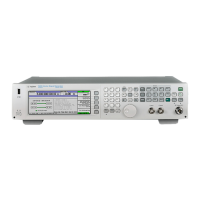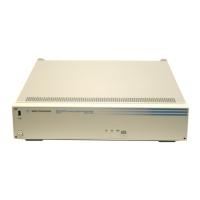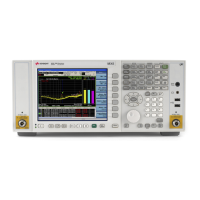Agilent N5181A/82A MXG Signal Generators User’s Guide 49
Optimizing Performance
Using an Output Offset, Reference, or Multiplier
Using an Output Offset, Reference, or Multiplier
Setting an Output Offset
Using an output offset, the signal generator can output a frequency or amplitude that is offset
(positive or negative) from the entered value.
RF Output = entered value − offset value
Displayed Value = output frequency + offset value
To set an offset:
• Frequency: Press Freq > Freq Offset > offset value > frequency unit.
• Amplitude: Press Amptd > More > Amptd Offset > offset value > dB.
Examples
When using the signal generator as a local oscillator (LO), you can use the offset to display the
frequency of interest, as illustrated below:
Parameter
Example
#1
Example
#2
Example
#3
Comments
Entered (and displayed) Value: 300 MHz 300 MHz 2 GHz The entered value must be positive.
Offset: 50 MHz −50 MHz −1 GHz An offset value can be positive or negative.
Output Frequency: 250 MHz 350 MHz 3 GHz
The signal generator alerts you if the
output frequency or amplitude is out of range.
Indicates that an offset is on
IF Amplifier
RF Amplifier
Mixer
Filter
Signal Generator
(local oscillator)
Output Frequency = 1000 MHz
IF = 321 MHz
Antenna tuned to 1321 MHz
Selected Offset
321 MHz
−679 MHz
SIgnal Generator Display
1321 MHz (Antenna Frequency)
321 MHz (IF Output)
IF Output
321 MHz

